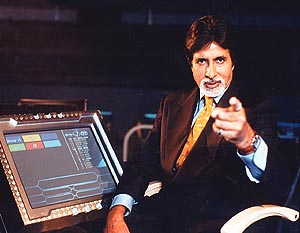The Da Vinci Code, a popular suspense novel by Dan Brown, generated criticism and controversy after its publication in 2003. Many of the complaints centered on the book’s speculations and misrepresentations of core aspects of Christianity.
With the pretext of freedom of expression and poetic license, Dan Brown has misrepresented the facts of history to tarnish the image of Christ and His Church. Here are a few of them.
1. Regarding the Divinity of Jesus: In The Da Vinci Code Chapter 55, Dan Brown writes that Jesus’ divinity was the result of a vote, and till then Jesus was viewed as a mere human. He writes, “the establishment as the ‘Son of God’ was officially proposed and voted on by the Council of Nicaea”. He adds that it was a relatively close vote’.
The Council of Nicaea did not discuss the ‘humanity’ and ‘divinity’ of Jesus. They only discussed the nature of his divinity. Moreover out of the 300 votes that were cast, 298 reconfirmed what the Bible has taught: Jesus is the eternal God who incarnated. (298 Vs. 2, how close is it?)
2. Regarding the Marital Status of Jesus: In The Da Vinci Code Chapter 58, after citing a passage from ‘The Gospel of Philip,’ which refers to Mary Magdalene as the ‘companion’ of Jesus, Dan Brown writes; “As any Aramaic scholar will tell you, the word companion in those days, literally meant spouse”.
The Gospel of Philip was written at least 150 years after Christ by Gnostic writer(s). Gnostics had no regard for history as they believed that an evil God created the world. In other words, Gnostics were not writing as historians. Even if one overlooks this fact, there is no reason to check the word companion with an Aramaic scholar because the ‘The Gospel of Philip’ is originally written in Greek and not in Aramaic!!!
3. Regarding what the Christians believed till 3rd Century AD: In The Da Vinci Code Chapter 55, Dan Brown writes, “until that moment (council of Nicaea) in history, Jesus was viewed by His followers as a mortal prophet…a great and powerful man, but a man nonetheless. A mortal.”
Here are some quotes from the pre-Nicaea Church Fathers: Ignatius of Antioch (circa 110 AD): “For our God, Jesus Christ, was conceived by Mary in accord with God’s plan: of the seed of David, it is true, but also of the Holy Spirit.”
Melito of Sardis (circa 177 AD): “The activities of Christ after his baptism, and especially his miracles, gave indication and assurance to the world of the deity hidden in his flesh. Being God and likewise perfect man, he gave positive indications of his two natures.”
Clement of Alexandria (circa 190 AD): “The Word, then, the Christ, is the cause both of our ancient beginning — for he was in God — and of our well-being. And now this same Word has appeared as a man. He alone is both God and man and the source of all our good things”.
Also, the immediate followers of Jesus believed and acted on the faith that Jesus is God. They believed in his promise of eternal salvation for them, which only God can offer. They believed that they would be saved eternally because and by the crucified and resurrected Jesus (refer to John 3:16, Romans 7:15-25 in the Bible). All the disciples except one died as martyrs. Hardly a commitment and trust that one would make put in a mere mortal!
4. Regarding the Bible: In The Da Vinci Code Chapter 55 Dan Brown writes, “The Bible, as we know it today, was collated by the pagan Roman emperor Constantine the Great”. Again, “More than eighty gospels were considered for the New Testament, and yet only a relative few were chosen for inclusion-Mathew, Mark, Luke and John among them.”
The only part of this statement that is a fact is that Rome had an emperor named Constantine. The connection between Bible and Constantine is recorded by the ancient historian Eusebius, a contemporary of Constantine and his admirer. Constantine ordered to make fifty copies (and not of collating) of sacred scripture-Bible, which in fact assumes its prior existence. Second, even if one broadly defines the word ‘gospel’ and include all reference to any gospel till the third century, the number arrived at is twenty and not eighty. The writers of other ‘gospels’ (Gnostics) considered history as deceptive, unlike the writers of the four ‘chosen’ gospels. Moreover, Gnostic gospels in contrast to the four gospels of the Bible have little or no biographical information about Jesus, are mainly secret sayings without multiple witnesses, and are mostly dated much later than the gospels of the Bible. In other words, the difference between the Gnostic gospels and ‘chosen’ four is the difference between myth and history.
5. In The Da Vinci Code chapter 74, Dan Brown writes, “Early Jews believed that the Holy of Holies in Solomon’s Temple housed not only God but also His powerful female equal, Shekinah. Men seeking spiritual wholeness came to the Temple to visit priestess with whom they made love and experienced the divine through physical union. The Jewish tetragrammaton YHWH, the sacred name of God- in fact, derived from Jehovah, an androgynous physical union between the masculine Jah and the pre- Hebraic name for Eve- Havah”.
God of the Bible is neither a male nor a female, he is a Sprit. The Book of Deuteronomy 4: 15-16 says “Take ye therefore good heed unto yourselves; for ye saw no manner of similitude on the day that the LORD spoke unto you in Horeb out of the midst of the fire: Lest you corrupt yourselves, and make you a graven image, the similitude of any figure, the likeness of male or female”. But Dan Brown says he is a male. What proof does Dan Brown have? The word Yahweh is a tetragrammaton of Jah and Havah. Wrong. Jehovah is a 16th-century rendering of Yahweh using the vowels of Adonai (Lord). The tetragrammaton derives from the Hebrew verb for ‘to be’ and is an indication of God’s eternal nature. Or in other words, it does not have anything to do with gender but the eternal nature of God.
{moscomment}







Mr Brown… Lord Jesus Christ still loves you. He is waiting for you to repent from your corrupt ways. Please repent before it’s just too late. Seek Lord Jesus Christ, the Son of the most Holy God and He alone shall save you from eternal damnation.